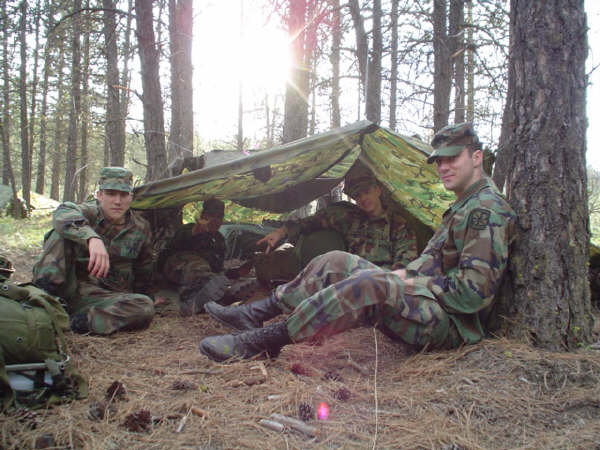
If some natural disaster were to occur in the area where you live, it would be most useful to have a bug-out location where you could stay at temporarily until it is safe to return home. However, a good bug-out location is more than just a tent you can pitch anywhere, especially if that's where you plan to stay for some time. It should have all the basic amenities and functions of your home. Follow this simple survival guide on how to plan and set up your own bug-out location. (h/t to BeansBulletsBandagesAndYou.com.)
A remote cabin hidden in the woods is often a standard bug-out location for many preppers. The most basic requirement it should have is that it should be able to provide adequate shelter. It should be sturdy enough to withstand the elements and not be rotting or falling apart on the inside. Once you've picked a spot, you can get started with making it a habitable living space.
Setting up water supplies
Your first priority is being able to access a source of water. Your bug-out location might not have plumbing, but there are other alternatives you can consider if you don't want to have pipes manually installed. The simplest solution would be to have a natural body of water nearby, such as a pond, lake, river, or stream. If the body of water is within walking distance of your bug-out location, you can use buckets to haul water whenever you need to. Running water can also be used as a means of constant power generation. However, if your bug-out location is nowhere near any natural water resources, you can make use of rainwater collection systems and large storage tanks. For showers, you can make use of portable camp showers. You can even have them be solar-powered if you want to have hot water.
Setting up gray water removal and drainage
Gray water is simply water that has already been used for washing. It isn't really hazardous but you shouldn't let it stagnate. After taking a shower or washing your hands, you should either have some minimal plumbing installed or a catch basin to collect all the water. Once your basin is full, you can normally just empty it out in an area with plenty of plants and vegetation to avoid erosion. What's important is that the water should be released downhill from the shelter.
Setting up your toilet
Setting up a proper toilet is necessary, otherwise, you might end up with a breeding ground for harmful bacteria. Composting toilets are good options for in-house toilets. If you can make do without the need for indoor privacy, you can set up your own outdoor latrine. However, you must be sure that you set it up properly to avoid contamination.
Setting up your food storage
If your bug-out location lacks electricity, food storage won't be as simple as opening a fridge, tossing your food in, and closing the door. Without heating or cooling systems, temperature will be one of your main concerns in keeping your food fresh. One of the best places to store your food would be in a root cellar, a cool, dark place without any exposure to light or heat. Your next concern will have to be keeping out pests, such as insects and mice. Depending on where your bug-out location is, you might have to deal with raccoons as well. Your best options are to use ice chests and sealed metal containers.
Setting up your security
To keep your bug-out locations secure, you'll want to focus more on keeping it concealed and hidden. Try to make sure it blends in with its surroundings, so that it can't be seen from a distance. You also won't want to draw any unneeded attention to your location. If you need to start a fire for warmth or for cooking, find ways to keep the smoke from being detected. Building a Dakota fire hole is a great way to have a clean-burning and easily concealable fire. (Related: Conceal your raging campfire with the ancient Dakota fire hole technique.)
Learn more tricks on bugging out by going to BugOut.news.
Sources include:
BeansBulletsBandagesAndYou.com
Please contact us for more information.





















